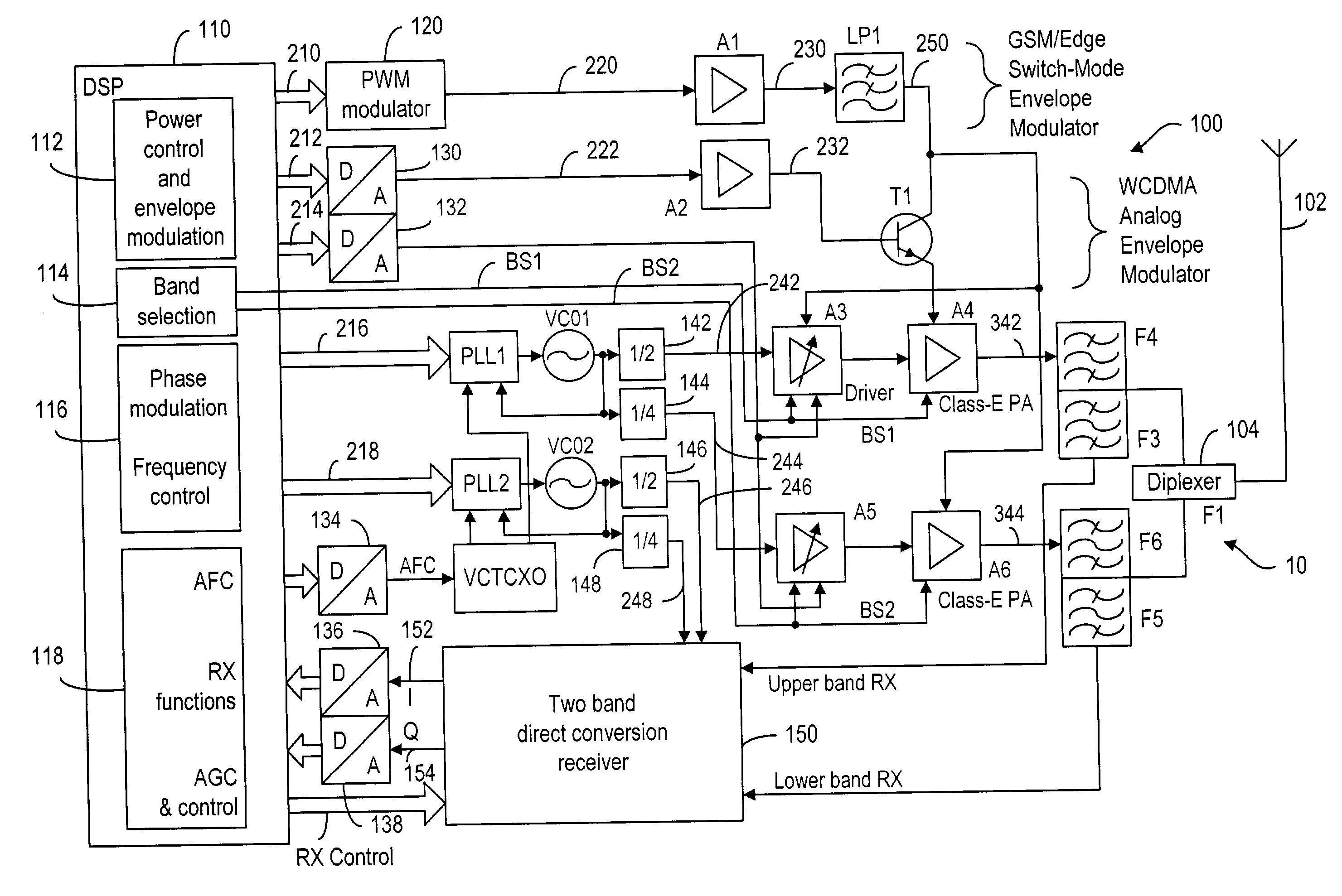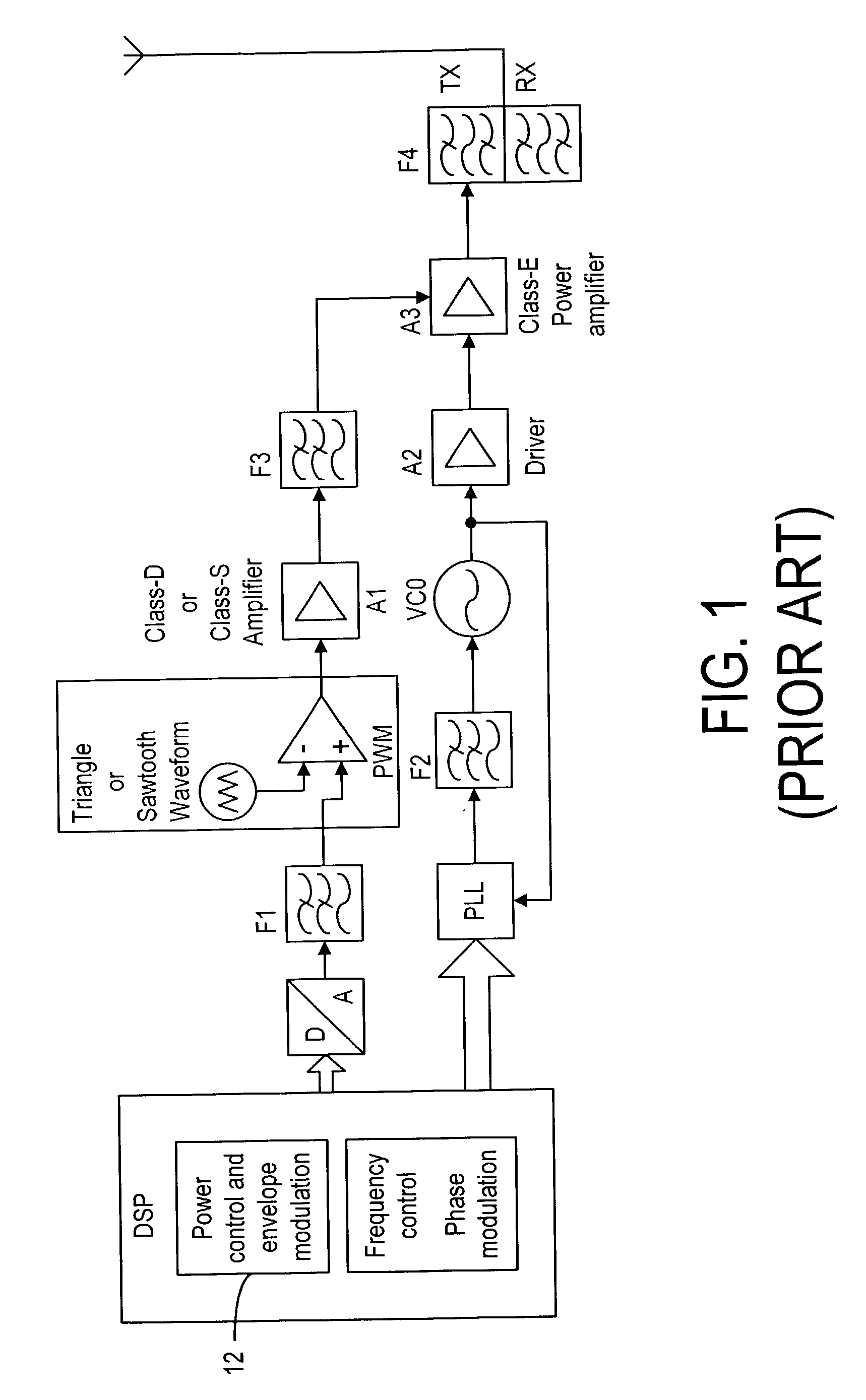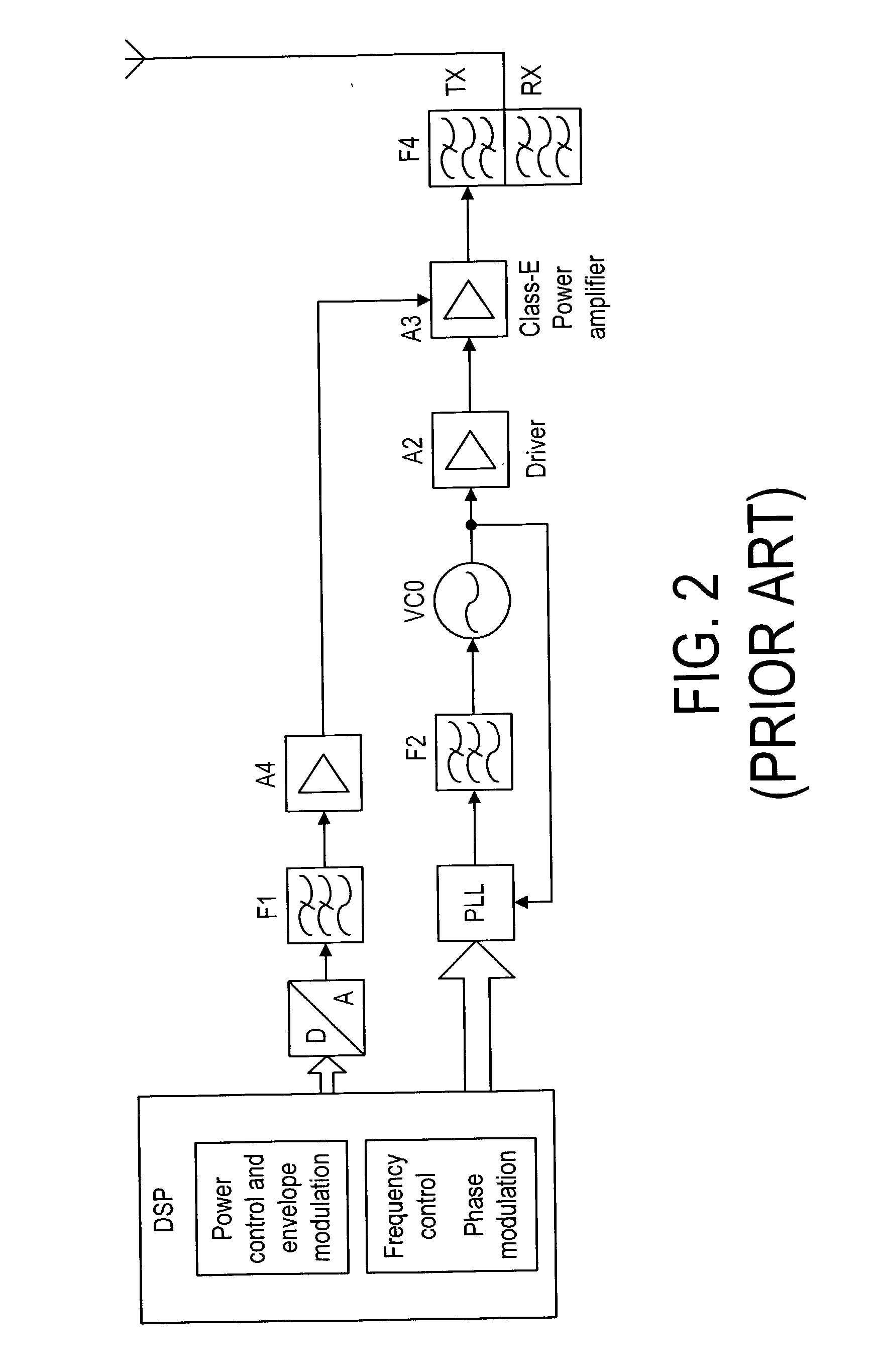Multi-mode envelope restoration architecture for RF transmitters
a transmitter and multi-mode technology, applied in the field of radiofrequency transmitters, can solve the problems of poor efficiency of switch-mode envelope modulation for use in wcdma (wideband code-division multiple access)
- Summary
- Abstract
- Description
- Claims
- Application Information
AI Technical Summary
Benefits of technology
Problems solved by technology
Method used
Image
Examples
Embodiment Construction
[0046]FIG. 3 shows a dual-band architecture for a multi-mode envelope restoration transceiver 10, which comprises a transmitter 100. The transceiver 10 has a common antenna 102 for transmitting signals and receiving signals. The common antenna 102 is split to two different frequency bands by a diplexer 104. Transmitter carrier signal is generated within a synthesizer PLL1 / VCO1. The output frequency of the synthesizer is divided by 2 by a frequency divider 142 for an upper band (approximately 1900 MHz) and by 4 by a frequency divider 144 for a lower band (approximately 900 MHz). The lower band can be used for a GSM (Global System for Mobile Communications) or EDGE (Enhanced Data Rates for GSM Evolution) mode, while the upper band can be used for a WCDMA mode, for example. As in a prior art envelope restoration transmitter, the modulated signal is divided into an envelope baseband component and a phase modulated radio-frequency (PM RF) component. The PM component 216 is generated by a...
PUM
 Login to View More
Login to View More Abstract
Description
Claims
Application Information
 Login to View More
Login to View More - R&D
- Intellectual Property
- Life Sciences
- Materials
- Tech Scout
- Unparalleled Data Quality
- Higher Quality Content
- 60% Fewer Hallucinations
Browse by: Latest US Patents, China's latest patents, Technical Efficacy Thesaurus, Application Domain, Technology Topic, Popular Technical Reports.
© 2025 PatSnap. All rights reserved.Legal|Privacy policy|Modern Slavery Act Transparency Statement|Sitemap|About US| Contact US: help@patsnap.com



